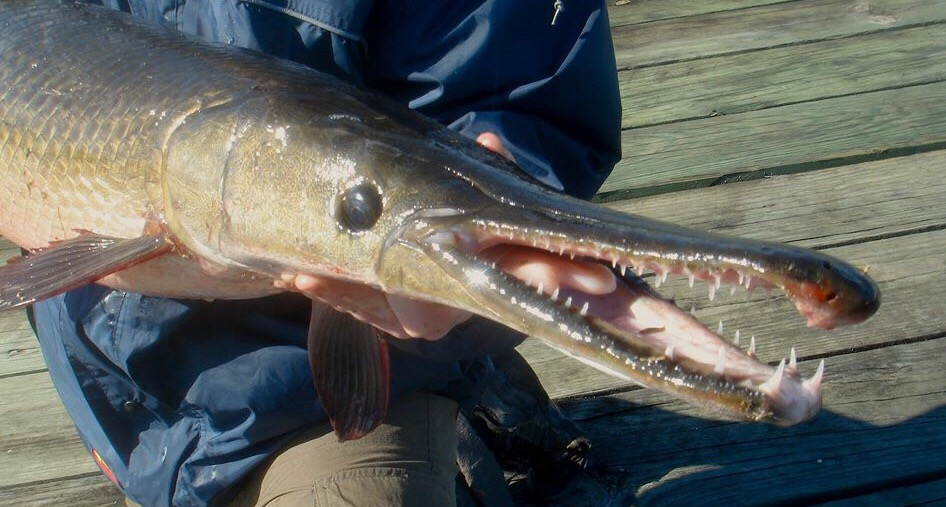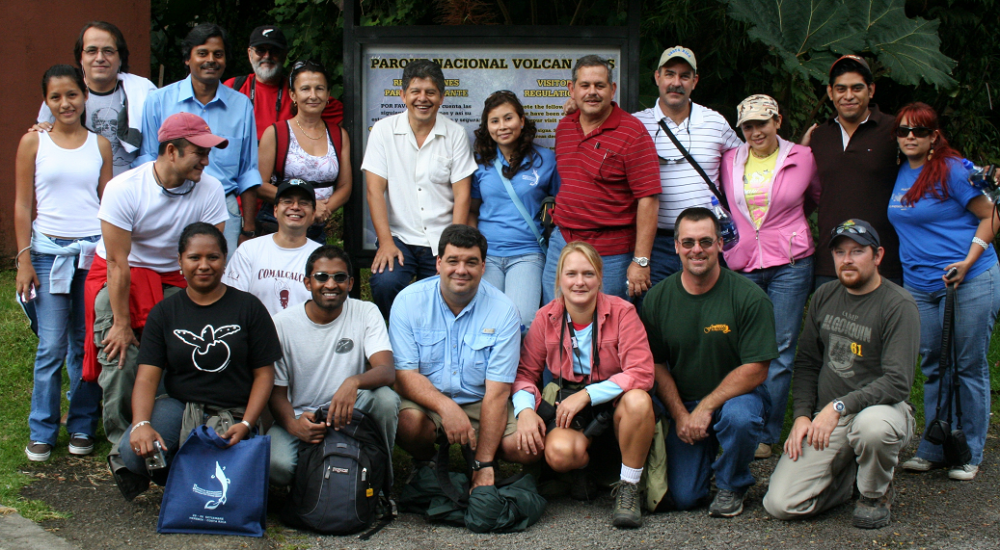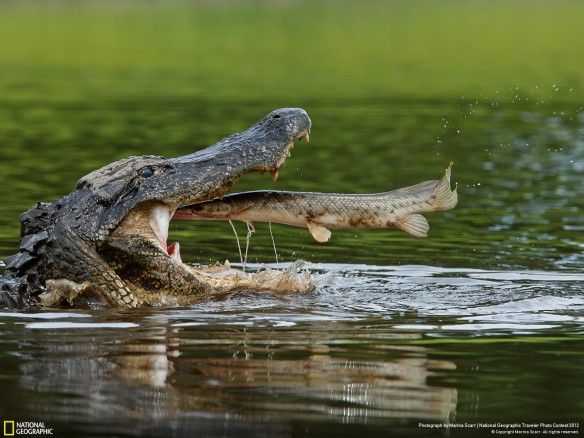
Alligator Gar from Louisiana (Photo by S.David)
Welcome to the new Alligator Gar Technical Committee Webpage. This site is currently under construction after migrating from its previous location. Updates will be coming soon. If you have information on Alligator Gars that you’d like shared on this site, please contact Solomon R. David at solomonrdavid@gmail.com.
Introductory information on Alligator Gar Atractosteus spatula
The alligator gar is the largest of four species of gar found in Arkansas. The largest one on record from Arkansas was taken from the White River and weighed 240 lbs. This species, the largest in the Mississippi River Valley, once had a range that spread across most large river systems and tributaries from the Gulf of Mexico states upstream into the Ohio River Valley. However, recent findings suggest a substantial decline in the population and range. In Arkansas, this species was once highly prolific and sought after as a sport fish in the White River, but recent surveys suggest populations are far below historic levels and could be declining further. In some states they are believed to have been extirpated. The Arkansas Field Office, in cooperation with the University of Central Arkansas (UCA) and the Arkansas Game and Fish Commission, is assessing the status of alligator gar in Arkansas and working cooperatively with the members of the multi-state Alligator Gar Technical Committee (AGTC) under the Southern Division of the American Fisheries Society to determine their status range wide and to promote their conservation, research, and management.
The ad hoc Lepisosteid Fish Research and Management Committee (LFRMC) consists of multiple state agencies, universities, and nations dedicated to furthering the conservation, research, and management of Lepisosteid species through collaboration and information sharing. One of the primary efforts of the LFRMC is improving our knowledge and understanding of alligator gar and their status. New information is shared through annual meetings of the LFRMC and the AGTC and it is our hope that this website will assist in these efforts by providing a conduit for communication and a repository of information about alligator gar.
The website for the Alligator Gar Technical Committee is under development and will be linked to this site once it is completed. Please contact Lindsey Lewis with questions or comments regarding this site or click below to download an informational brochure or flier.


![-Alligator Gar [Skull] of The Past...](https://garfishes.files.wordpress.com/2013/08/pf-photo-field-museum-alg-skull-1a.jpg?w=584)






